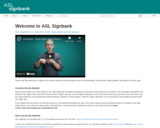
ASL Signbank is a collection of ASL signs linked with ID glosses.
- Subject:
- Arts and Humanities
- Languages
- Material Type:
- Data Set
- Date Added:
- 01/04/2022

ASL Signbank is a collection of ASL signs linked with ID glosses.

This American Sign Language 101 OER is a Google Doc containing instructional videos of original design. The document also offers media content from ASL instructors and creators across the Web. All materials are meant as a supplement to ASL instruction. These resources are in no way intended to replace the breadth of knowledge acquired from taking an ASL course.

This American Sign Language 102 OER is a Google Doc containing instructional videos of original design. The document also offers media content from ASL instructors and creators across the Web. All materials are meant as a supplement to ASL instruction. These resources are in no way intended to replace the breadth of knowledge acquired from taking an ASL course.
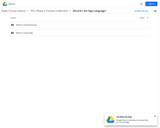
ASL I is an introduction to the naturally existing language widely used by Deaf people in North America. Since ASL is a visual-gestural language, students will need to develop unique communication skills. These consist of using the hands, body, face, eyes and space. In order to achieve progress in this class, it is important to become comfortable communicating with your whole body and listening with your eyes.

ASL II is a sequential course following ASL I, which continues to build knowledge of the naturally existing language widely used by Deaf people in North America. Since ASL is a visual-gestural language, students will need to continue to develop unique communication skills. These consist of using the hands, body, face, eyes and space. In order to achieve progress in this class, it is important to become comfortable communicating with your whole body and listening with your eyes.
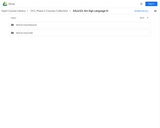
ASL III is the third quarter of the first year study of American Sign Language (ASL) and the people who use it. ASL III will enhance the use of ASL grammar and consist of concentrated efforts to develop the studentęs expressive and receptive skills. The course will continue to provide insights into Deaf Cultural values, attitudes and the Deaf community. Now learning more abstract concepts of the language, ASL III students will be able to: narrate events that occurred in the past, ask for solutions to everyday problems, tell about life events, and describe objects. Students will also be able to: demonstrate intermediate finger spelling competency, generate complex ASL structures with intermediate vocabulary knowledge, execute a wide variety of grammatical principles, including classifiers and inflections, adapt to different sign language registers, dialects and accents, and create opportunities to interact with members of the Deaf community.
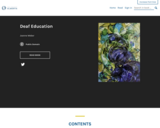
Video textbook for Deaf Education.
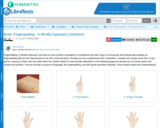
Fingerspelling: A Mindful Approach will show us how to build a foundation of mindfulness and then ways of consciously and intentionally building our fingerspelling skills for the improvement of our ASL communication. Perhaps you are a professional ASL Interpreter, a student who simply loves ASL or any person, hearing or Deaf, who has within them the intuitive desire to communicate effectively. In the following pages we will tap into our innate desire and answer the question—how do we take a nuance of language, like fingerspelling, and with gentle persistent attention, strive toward clarity and understanding?

Conversation Activities | The Pathways Project
Short Description:
Let’s Chat! ASL features a collection of over 160 interpersonal activities for novice and intermediate learners. Touching on a range of thematic topics such as free time activities, resolving conflicts, daily routines, health, the environment, holidays and so much more, ASL teachers are sure to find an activity to use in their courses. These activities may be used as is or can easily be revised and remixed to fit the unique needs of individual classrooms.
Long Description:
Let’s Chat! ASL features a collection of over 160 interpersonal activities for novice and intermediate learners. Touching on a range of thematic topics such as free time activities, resolving conflicts, daily routines, health, the environment, holidays and so much more, ASL teachers are sure to find an activity to use in their courses. These activities may be used as is or can easily be revised and remixed to fit the unique needs of individual classrooms.
Are you a language instructor using Pathways Project Activities? We would love to hear from you. CLICK HERE to provide your feedback and share back activities you revised with the Pathways Community.
The Pathways Project, an initiative from the Department of World Languages at Boise State University, is a collaborative network of open educational resources (OER) including instructional language teaching materials and professional development created by and uniquely for Idaho’s K-16 language teachers and students.
Teachers and students participating in the Pathways Project come from different fields of study and schools across Idaho to create open (i.e., free), digital activities that support the teaching and learning of foreign languages and promote intercultural competence. We hope to impact the opportunities learners have to connect to the global world!
Visit the Pathways Project Website to learn more.
Word Count: 132240
(Note: This resource's metadata has been created automatically by reformatting and/or combining the information that the author initially provided as part of a bulk import process.)